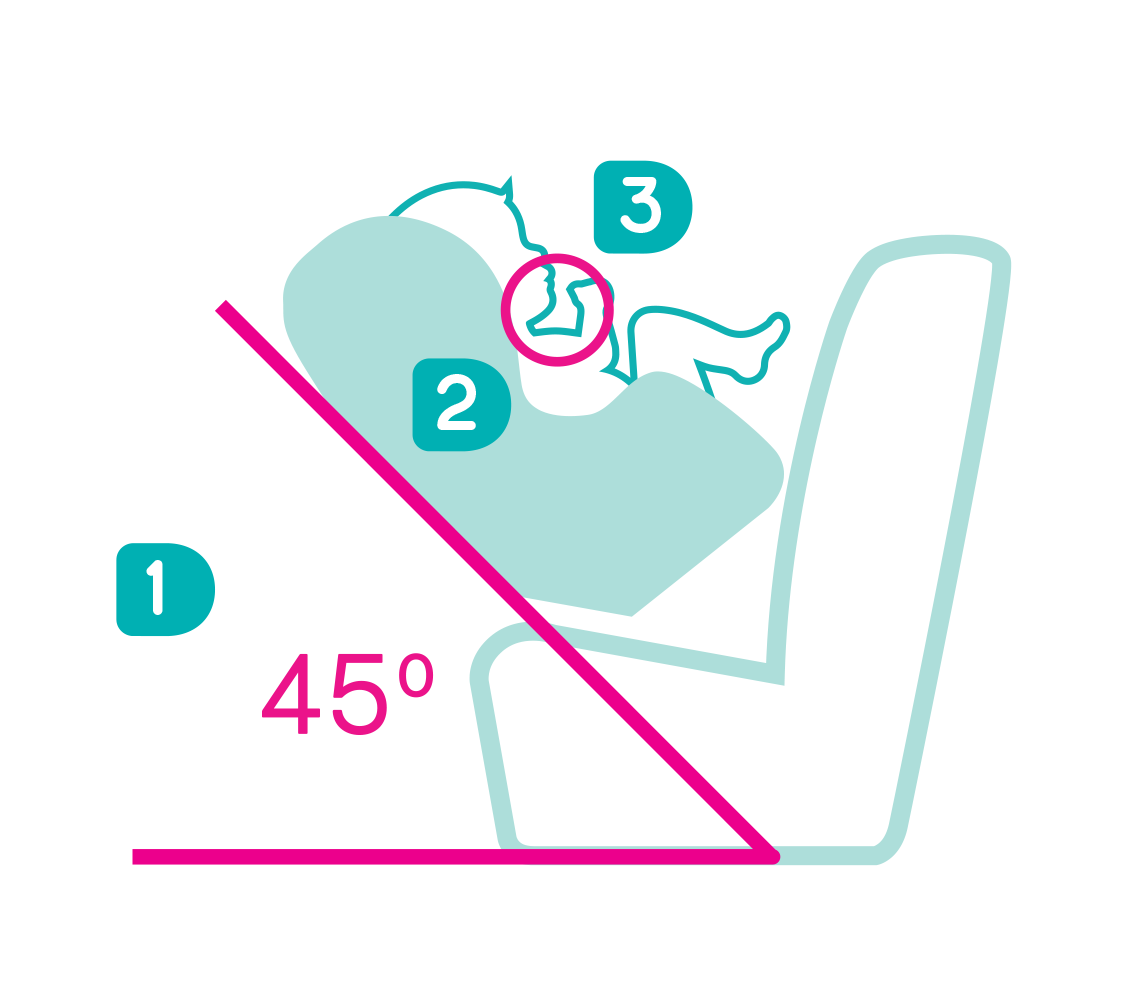Chin to Chest Guide

Ensure your baby is correctly positioned in their rear facing car seat to avoid chin to chest risk.
If a baby's head is placed in a position where their chin touches their chest, this could impact their breathing. Please check:
- Their car seat should be fitted and maintained at a 45° angle to provide protection but not be too upright.
- Baby's head and back should sit flat along the shell of the car seat with no gaps. Remove additional padding if required.
- Baby's head should not be pushed forward in the seat. As a guide, can you fit a finger between the baby's chin and chest?
If you have any questions, visit your local Baby Bunting store where our friendly team can assist.
Why is Chin to Chest Position a concern?
If a baby's chin touches their chest, it can impact safe breathing.
Who is at Risk?
Babies are most at risk in their first few months. Their neck muscles aren't strong yet, so they can’t lift their head if it begins tilting forward in a car seat. This forward tilt can then block the airway, as air tries to move in and out of the baby’s lungs.
Why Are Car Seats a Concern?
- Car seats are designed to keep babies safe in cars and are tilted at about a 45-degree angle. This angle is good for protecting babies in a car crash and usually positions a baby in a way that helps keep their airways open.
- Not all babies fit the same way in a car seat.
- Most car seats have extra padding behind the baby's head. This padding is for comfort, but sometimes it pushes the baby’s head forward, causing the chin to rest on the chest which will impact breathing. Remember, this extra padding isn't there for safety during a crash, so removing or adjusting it is essential if it's causing the baby's head to tilt forward.
1. Check for Gaps
After you have buckled your baby in the car seat, check for only a small gap:
- Behind their shoulders
- Behind their back
- Behind their bottom
- Between their nappy and the crotch strap
If the gaps are correct your baby is in a safe position.
2. Chin Check
- Using one finger try to fit it between your baby's chin and chest.
- There should be a clear space between their chin and chest.
- Look at your baby's head, it should be in a natural position.
If their Chin is on their Chest, What Should You Do?
Remove or Adjust Extra Padding:
If there's extra padding pushing your baby's head forward, remove or adjust it. The padding should only be kept if it allows your baby to be in a comfortable position, with their head straight and nose not tilted down towards the tummy.
Check and Adjust the Straps:
- The harness straps should fit snugly but comfortably. They should keep your baby securely in place, without pushing them into a curved or bent position.
- For rear facing car seats, the shoulder straps should be level with your baby's shoulders.
Adjust the Car Seat Angle:
Make sure the car seat is leaning back properly, about 45 degrees. The angle can be seen on the side of the car seat.
Check Again:
After you've made these adjustments, do the no gaps and chin check once more to be sure everything is right.
By following these steps, you can help make sure your baby is safe and comfy in their car seat. A quick car seat chin checks each month will maximize the safety of your baby as it grows.
If you still hold concerns, please visit your local Baby Bunting store for additional advice.